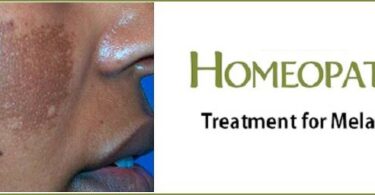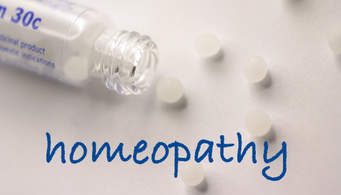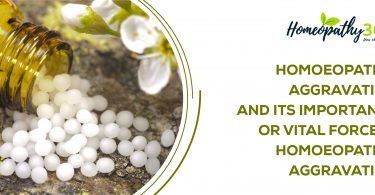ABSTRACT: The main aim of this article is to know the effectiveness of Homoeopathic medicine Thuja Occidentalis on Warts of Dogs. This article shows how effectively Homoeopathy can be utilized to stop the recurrence of warts on dogs and gives an answer whether Homoeopathy can remove warts completely and act on animals as well.
KEYWORDS: Homoeopathy, Veterinary, warts, Thuja occidentalis.
INTRODUCTION:
As we all how affective Homoeopathy is on warts of Human beings irrespective of its types but its not just Human beings are affected but even other living animals are also been affected, the most commonly seen problems in dogs are warts and the best way to treat them is Homoeopathically with zero side affects and also can drastically reduce the recurrence of it also.
In Homoeopathy, we give importance to Individuality we give importance to the patient suffering from disease and not just the disease alone, but we are all aware that there is unique way of prescribing the similimum based on several observations, I would also like to say that Animals are unique they also have their own individuality but when we compare them to humans and animals, animals need different approach because we don’t get the subjective symptoms but we can definitely give importance to objective symptoms. But it is not always true that we cannot get subjective symptoms of animals because there are some individuals who are so attached to their pet animals that they have an emotional bonding in-between them, in such cases the best approach I can suggest is the constitutional approach. The law of similimum has immense potential and could give a new direction that requires attention of the researchers in veterinary Homoeopathy Often, early homeopaths treated both human and animal patients, and numerous case reports of treatment in dogs, horses, and cattle have been preserved in the works of these pioneers. .1 Here in this article I shall explain you how based on objective symptoms we can treat animals.
Proving on Animals then finding the suitable drugs with the help of drug proving is an impossible task as we all know that we give importance to subjective symptom’s, and its difficult task to collect the subjective symptoms from animals, which is one of the limitations in Veterinary Homoeopathy & Constructing a Material Medica for Animals is hectic work.2
ABOUT WARTS:
Warts are typically small, rough, hard growths that are similar in color to the rest of the skin3. They typically do not result in other symptoms, except when on the bottom of the feet, where they may be painful.4 While they usually occur on the hands and feet, they can also affect other locations.1 One or many warts may appear.4 Oral papillomas are “warts” that occur in the mouth. A dog may have a solitary papilloma or may have multiple warts in the mouth (hundreds to thousands). The papillomas can show up on the lips, tongue, roof of the mouth, or inside the cheeks.5On diagnosis that is on dermatoscopic examination warts will commonly have fingerlike or knoblike extensions.6
HOMOEOPATHY & ITS EFFICACY ON WARTS:
The word thuja is very familiar from a dermatologist to a common man, because whenever anyone comes across warts the first medicine comes to us is thuja, this remedy is not just famous Homoeopathically alone for the treatment of warts but also allopathically. Homeopathic treatment of warts is largely through constitutional medicine. But we all know that the remedies may be effective for treating warts, they are not necessarily effective for all types of warts or in different suffering individuals it may be a man or an animal. Treatment is with a single well indicated remedy based on complete totality of symptoms when it comes for human beings but in case of animals it’s a bit difficult to get the constitutional remedy hence a sector totality will be the best possible approach. We often come across patients and practitioners using Thuja or a combination of various drugs for warts. However, this is not in accordance to the principles and guidelines laid down as Dr Hahnemann said single dose single remedy will always be the best treatment.
IMPORTANT HOMOEOPATHIC MEDICINES FOR WART WHICH CAN BE USED ON ANIMALS BASED ON SECTOR APPROACH:
Thuja occidentalis: When the warts are isolated, jagged warts that smell or bleed very easily or mosaic warts on the sole of the foot.
Causticum: Usually seen inold aged individuals, pedunculated warts, suppurating with great sensitivity to touch. Hard, horny warts that bleed easily.
Natrum muriaticum: Warts on palms and fingers.
Calcarea carbonica: Warts are fleshy, horny, painful, and offensive. Patient is usually chilly, lazy and indolent, and fearsome
Nitric acidum: Fissured warts that itch and sting or bleed upon washing. Often useful for warts that have a horny wall surrounding a central depression.
Dulcamara: Warts flat and hard warts located on backs of hands and face. Also indicated in Homeopathic management of large warts. Patient is worse in cold, damp weather, or humidity7
VETERINARY HOMOEOPATHY:
The first rule of homeopathy is that if our medicines can create a certain type of disease artificially then definitely it can battle the diseases from nature as well, something which causes certain symptoms in a healthy person is the best treatment for those symptoms in someone who is sick but this holds good not just for humans but to animals also. This is a principle that is known as the Law of Similars5 but in this article it partially shows that definitely the law holds good for every living organism which has a vital force in it but now the treatment methodology clearly reflects a metaphorical approach to disease which, in modern medical science, has been replaced by specific pathophysiologic explanations derived from scientific research. Apart from this issue, however, the Law of Similars has the definite problem that if you give sick patient something that creates symptoms of illness in normal individuals, you will often make them worse.8 same holds true in terms of animals also because the nature belongs to everyone thus the law of nature also belongs to everyone but the available literature regarding veterinary concerning homeopathy is very less than that in human medicine, but the same general assessment applies.9
A CASE STUDY:
This case belongs to a Labrador retriever who is 2 years old. The dog owner came to me with the hope of solution for the recurrent attacks of warts especially on nose this was noticed by owner when she was happily admiring her dog’s winning smile and then she noticed there is a wart. And then you spot another one, to understand what this dog warts are basically they called as “canine papillomavirus.” These rough-textured growths (think cauliflower) are a virus that seems to crop up practically overnight and spread quickly. They’re usually found on the lips and in the mouth, but can also appear on the eyelids, throat, or between the toes.10
Let us first know how Dogs Come across these Warts, Dogs acquire the papillomavirus when they come into contact with an infected dog. Young dogs (less than two years old) are particularly susceptible because their immune system isn’t good enough to fight off the infection at all. After a dog has been exposed to the virus, it takes about one to two months for the warts to appear. Dog-to-dog transmission is very common, you’re in no danger of catching warts from your dog at all as it doesn’t spread to humans at all.
When tried to take case in detail with the view to treat dog constitutionally the series of questions were asked to the owner of the dog and asked to express the same in detail. The owner said that the dog becomes cranky if her desired things are not given to her as well as obstinacy, she would even fast for days together if her desired food is not given to her and also her obstinacy towards the toys as no one should play with it except her further also her complaints of excess ticks on her body which made her more irritable was mentioned. The owner also made a statement that same time this dog is a part of our family she cares us a lot, she won’t eat anything if others try to feed her, rather stay hungry till I come and feed. She says that the dog is very emotional and is very much attached to her as she waits every time she goes out and waits near the door waiting for her to return. Some times when over excited she tends to bite unknowingly but same time she feels guilty and shows a sad sorry face, she likes to be only with known people, if she sees huge vehicle passing on roads always observes it carefully till it goes out of the sight. When it comes for eating owner says that she is just like a cow, she eats every possible vegetable and also said that she is purely vegetarian dog. She responds to me with her eyebrows as well as replies with a gentle bark.
When it comes for her warts, the owner said that warts are isolated, jagged warts that smell or bleed very easily on touch as well as slightly painful also. Based on all the above details a dose of thuja 200 (4 packets) weekly HS was given and within a month the warts disappeared as well as till date it has not recurred. This case of dog warts is an ignite for many Homoeopaths that there is infinite scope for Homoeopathy even in the field of Veterinary sciences. But as we all know just with one case, we cannot claim ourself affective so I suggest that there should be large scale of research which can be done on the same and yet again we prove the effectiveness of our system. Thus, we can scientifically prove that law of similars hold good even for animals as well as they too have Vital force in them.
EVIDENCE BASED:
BEFORE HOMOEOPATHIC TREATMENT:
AFTER HOMOEOPATHIC TREATMENT
CONCLUSION:
Homeopathy is routinely practiced in dogs, cats, horses, ruminants, and birds. Its use in other exotic species is growing rapidly. Finally, I would like to say that Homeopathy relies on a complex process for individualizing the use of homeopathic preparations by evaluating the physical and mental experiences of patients and comparing them with experiences reported by healthy individuals testing specific homeopathic remedies but to construct a whole new Materia medica becomes a strenuous work. But if we come across such clinically verified cases it ignites us a hope in Homoeopathy even though it’s a laborious work. Homeopathy is, depends on whom you ask, a gentler and more natural alternative to wholistic medicine at best. Meanwhile, homeopathy’s place in veterinary medicine remains a source of contention. 11The present cases bring to light the effectiveness of Homoeopathic medicine Thuja with 200c in the treatment of warts. In future, randomized controlled trials with larger sample size can be done to authentically claim the efficacy of Homoeopathy on Animals.
ACKNOWLEDGEMENT:
I would also like to thank Dr Meghana S Kumar MDS (Pediatric dentist) dog owner who trusted Homoeopathy and came forward for the treatment & Dr Shreya N Padiyar (MD Homoeopathy) for affectionately taking the case and understanding the core of the case thus giving a new dynamic of case taking for animals and also I have to mention Dr P Manohar Upadhya (veterinary doctor) sir, who is the inspiration for me to try Homoeopathic Medicines on dogs as sir has saved infinite dogs with the blend of medicine and wisely selecting mode of treatment eighter Allopathy or Homoeopathy as per the dogs needs at particular times and saving many hopeless and homeless dogs miraculously with minute doses.
REFFERENCE:
- https://vcahospitals.com/know-your-pet/veterinary-homeopathy
- https://www.veterinarypracticenews.com/homeopathy-december-2019/
- Loo, SK; Tang, WY (12 June 2014). “Warts (non-genital)”. BMJ Clinical Evidence. 2014. PMC
- “Warts: Overview”. U.S. National Library of Medicine.
- https://www.vet.bc.ca/oralpapillomas.
- “Dermatoscopy of genital warts”. Journal of the American Academy of Dermatology. 64 (5): 859–864.
- https://www.ijdd.in/article.asp?issn=24553972;year=2016;volume=2;issue=1;spage=45;epage=47
- Kunzli J, Naude A, Pendleton P Tarcher PJ. Organon of medicine Samuel Hahnemann the first integral english translation of the definitive sixth edition of the original work on homoeopathic medicine a new translation
- Doehring C, Sundrum A. Efficacy of homeopathy in livestock according to peer-reviewed publications from 1981 to 2014. Vet Rec. 2016;179(24):628.
- https://www.nylabone.com/dog101/managing-canine-warts#:
- https://www.avma.org/javma-news/2017-05-01/closer-look-veterinary-homeopathy
AUTHORS:
Dr Skandhan. S. Kumar, BHMS MD Organon of Medicine, Assistant professor department of organon of medicine and philosophy, Father Muller Homoeopathic Medical College.
Dr Shreya N Padiyar, BHMS MD Organon of Medicine, Assistant professor department of Surgery, Yenepoya Homoeopathic Medical College.





